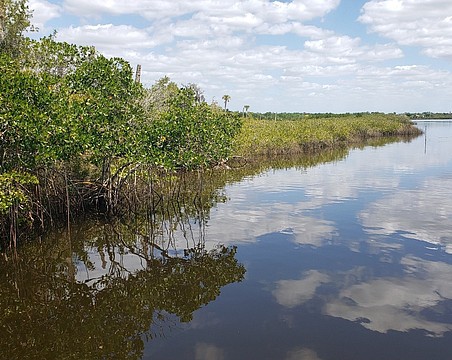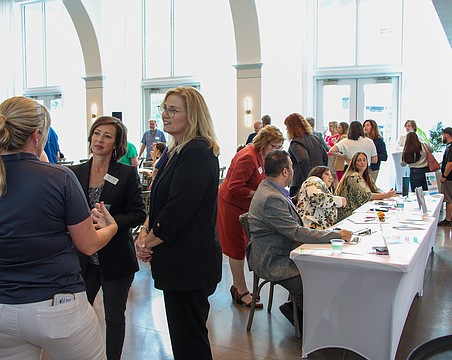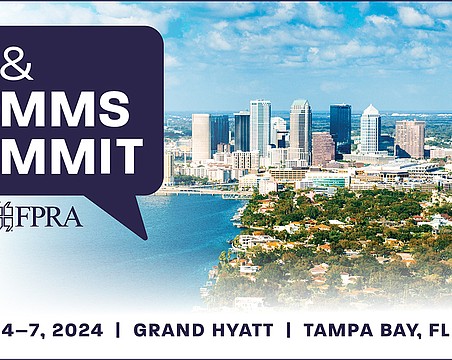Barring an unexpected economic catastrophe, commercial real estate along the Gulf Coast in 2016 should continue its unabated surge, according to those in the industry.
The coming year will likely see impressive gains in a multitude of sectors, and may result in new — and perhaps speculative — development in office, industrial and retail space.
And as has been the case in 2015, multifamily, hospitality and senior housing projects will generate the bulk of investor and developer interest alike. Experts maintain that despite concerns of oversupply, none of those three sectors will likely slow in the year ahead.
That's because larger trends — from population influx to increased travel to aging demographics -- are shaping and dictating commercial real estate decisions.
“Florida is in a good place right now. Vacation spending is good. People are migrating to the state. The U.S. is doing well economically. And that bodes well for commercial real estate across the board,” says Larry Richey, who head commercial brokerage and services firm Cushman & Wakefield in Florida.
“We're probably in the later innings of this cycle, but there's no sign that things are going to change,” he adds. “There's no question in my mind that so far for 2016, there's nothing on the horizon that will derail commercial real estate activity, or turn the economy in a different direction.”
Richey also indicated that even if the Federal Reserve gradually hikes interest rates in the coming months, as is widely expected, the move will have little impact on commercial real estate in the coming year.
Continued momentum, meanwhile, is manifesting itself in a bevy of new restaurants and retail centers, as well, which show few signs of slowing over the next calendar year as institutional players and individual investors alike allocate capital amid a low interest-rate environment.
“We're seeing a lot of money floating around now, looking for deals,” says Bill Eshenbaugh, president and CEO of Tampa-based Eshenbaugh Land Co.
Ray Sandelli, managing partner of CRE Consultants, a brokerage and services firm in Fort Myers and Naples, says capital has flowed into commercial real estate, in part, because of tepid yields on more traditional savings vehicles and undulations in the stock market in recent years. He adds that trend will likely continue through 2016.
But while abundant capital and market demand has brought about a wave of new development and pushed prices on product types higher, Eshenbaugh and others contend Florida is not overheated, and nor will it be over the next 12 months.
“I don't think we're knocking the cover off the ball,” Eshenbaugh says. “I think it's been a steady, deliberate recovery based on demand.”
Population increases in Florida -- it passed New York last year to become the nation's third most populous state — has also sparked interest among investors, especially institutional buyers, and that shows no signs of waning, either.
“Third-tier markets like ours in Naples and Fort Myers are getting looked at now by institutional capital,” Sandelli says. “And that's because we're continuing to evolve as a marketplace, we're becoming a more year-round destination from a seasonal one.”
Big moves by the likes of Hertz Corp., Amazon and Johnson & Johnson also have resonated beyond Florida's borders and into corporate boardrooms.
Many expect their impact in moving to Florida will continue well into 2016 and beyond, and prompt others to consider the state for expansion. That, in turn, could generate additional development, especially in the industrial and office sectors.
“We haven't seen a lot of construction in the office or industrial sectors along the Gulf Coast, but that's coming,” Cushman & Wakefield's Richey says. “There's a lot of demand from tenants, and at this point, there's nothing to do but introduce new product.”
Richey adds that while rents for office space have not increased enough perhaps to warrant new construction, they have gone up “by unprecedented levels the past two years,” especially in Tampa.
“New construction is viable now,” Richey says. “It'll be the story out of the box for 2016.”
The same is true for Sarasota, where office and industrial demand has tightened. Development, meanwhile, has largely been lacking.
“Activity is usually down this time of year,” says Tony Veldkamp, managing director of the Sarasota office of brokerage firm Sperry Van Ness and the incoming president of the Realtor Association of Sarasota and Manatee's Commercial Industrial Division. “But we're doing a lot of leasing, and prices and rates are up to the point where people are thinking about building again, especially in the flex arena.”
Veldkamp also believes new restaurant openings in Southwest Florida will be hampered only by an inability to secure attractive sites, and that multifamily development, especially in Sarasota and Manatee counties, “has been overheated for some time.”
“Overall, I think 2016 will be very strong,” he says.
Hospitality activity, too, will remain robust, with new development and select sales at top prices.
“There will be at least a couple more years of profitability before things level off,” says Gregory Rumpel, managing director of brokerage JLL's hotels and hospitality group, out of Miami. “And for the first time in a while, there will be new product that settles in in 2016 and 2017.”
Even with fears of oversupply in areas like Tampa, analysts say multifamily sales and development will continue at the same scorching pace as has been seen in the past two years.
“In Tampa there may be an oversupply issue, but even there, the multifamily market was pushed so far down during the recession, there's not a lot of risk of oversupply elsewhere in the region, especially in Collier County,” says Jonathan Richards, first vice president of CRE Consultants' multifamily advisory group.
“We're still seeing strong demand from millennials and baby boomers, and the fundamentals are good,” Richards adds. “It's a great time to be a multifamily investor. The sector is in the best space it's been in in a decade.”
Richards notes that even in sectors where oversupply is an issue, like senior housing, the risk of collapse in 2016 remains minimal because momentum is so robust.
“There's always concern when commercial real estate embarks on a sustained upward trend,” Sandelli says. “Is it sustainable? Is it a bubble? But my sense is, and the people we hear from, is that there's good momentum right now, and it's measured. That's a good omen for 2016.”
- K.L. McQuaid






